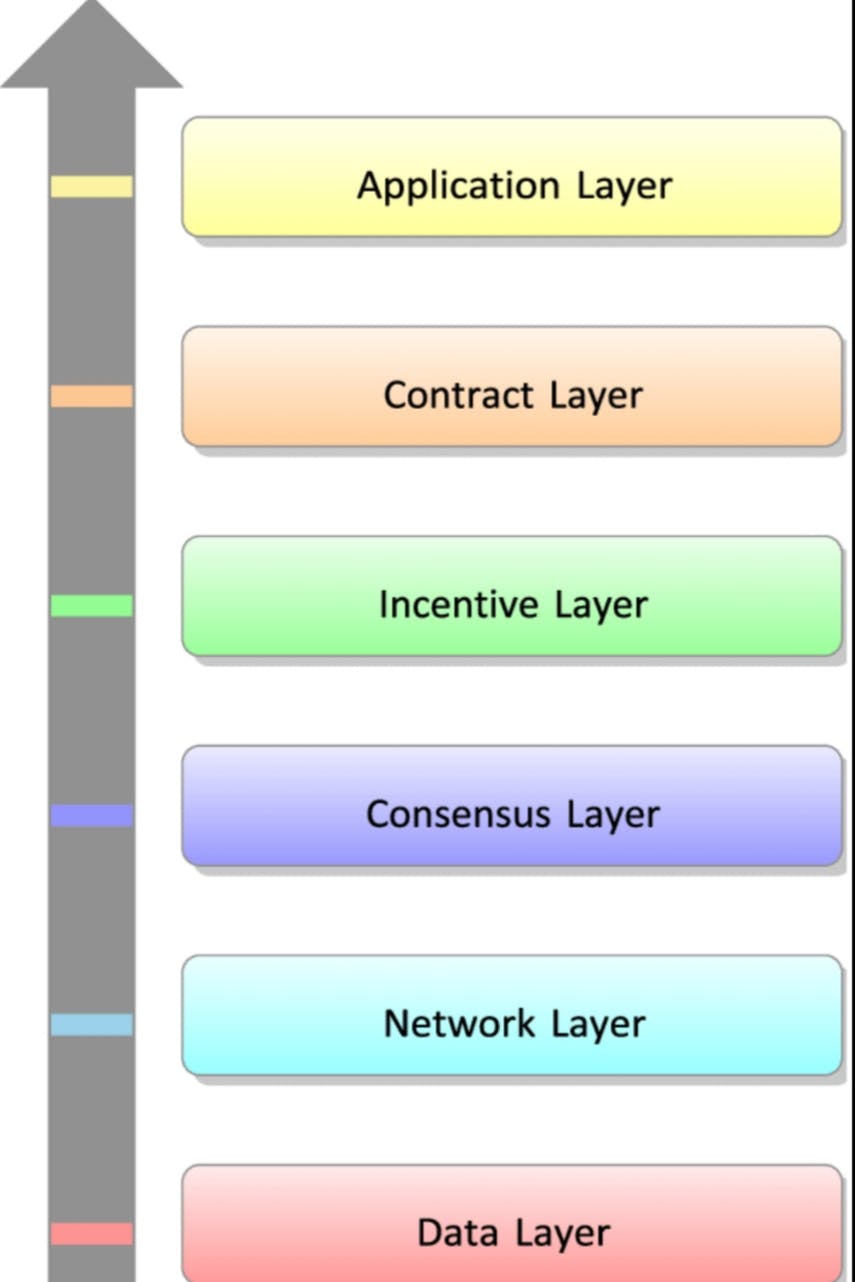
Photo by Shubham Dhage on Unsplash
Blockchain Layers Explained (part One)
Understanding the Mechanism behind Inter-Block-Communication(IBC)
What is L1 and L2 Blockchain Layer ?
L1 blockchain networks are designed for speed, security and expansion. L2 refers to technology enhancements and products that can be utilized to expand the scalability of existing blockchain networks. Getting the perfect balance between the two layers might be a game-changer for blockchain adoption and the expansion of decentralized networks.
The Layered Structure of the Blockchain
Data Transfer Layer
The data transfer layer is the bottom layer among blockchain protocols and components. Data layer components include the Internet, hardware, and connections that will enable layer one to run smoothly. The data layer operates as the blockchain data structure and comprises two primary elements: pointers and a linked list. The linked list is a chain of blocks with their data and pointers to the previous blocks. Also, the data layer consists of the following components: Merkle Tree and Hashing Function.
Network Layer
Network layer or P2P layer, is responsible for inter-node communication. Discovery, transactions and block propagation are all handled by the network layer. Propagation layer is another name for this layer. This P2P layer ensures that nodes can find one other and interact, disseminate and synchronize to keep the blockchain network in a legitimate state. A P2P network is a computer network in which nodes are distributed and share the workload of the network to achieve a common purpose. The blockchain's transactions are carried out by nodes.
Consensus Layer
In the blockchain, the third layer refers to the consensus layer that mainly includes consensus algorithm mechanisms like proof of work and proof of stake. The consensus layer provides a certain set of agreements between nodes across the distributed peer-to-peer network to reach a consensus about the broadcasted transactions. It also deals with the production and verification of blocks. To achieve a consensus, more than half of the participants (nodes) need to validate the transactions before it is permanently recorded in the blockchain ledger. Once a transaction is permanent, no one, not even the system administrator, can delete the transactions from the ledger. The type of the consensus algorithm and the number of nodes determine how much cost and time are required to reach consensus. PoW and PoS are two common consensus mechanisms across the blockchain.
Incentive Layer
An incentive layer determines the variant types of incentives that are available on the network and how these incentives are delivered to the network nodes. Additionally, the incentive layer defines the minimum amount of transaction fees needed to perform actions on the blockchain. The capabilities of the incentive layer include the distribution of rewards and transaction fees. To run a successful blockchain platform and develop the transactions, we need some incentive programs for individuals to get more nodes involved in the blockchain for validating transactions. Depending on the type of consensus mechanism, each node receives a particular reward. For instance, In PoW, the node receives an amount of cryptocurrency for solving the puzzle.
Contract Layer
The contract layer provides various components and services like smart contracts, digital wallets, state channels, data feeds, DAOs in order to create a bridge between blockchain platforms and other technologies
Application Layer
The application layer is the final and uppermost layer in blockchain architecture presented to the users and provides applications on top of the blockchain. The capabilities of the application layer include programmable smart contracts, APLs and dApps. For instance, a programmable blockchain like Ethereum, various advanced features, and dApps work together to make up the application layer.

